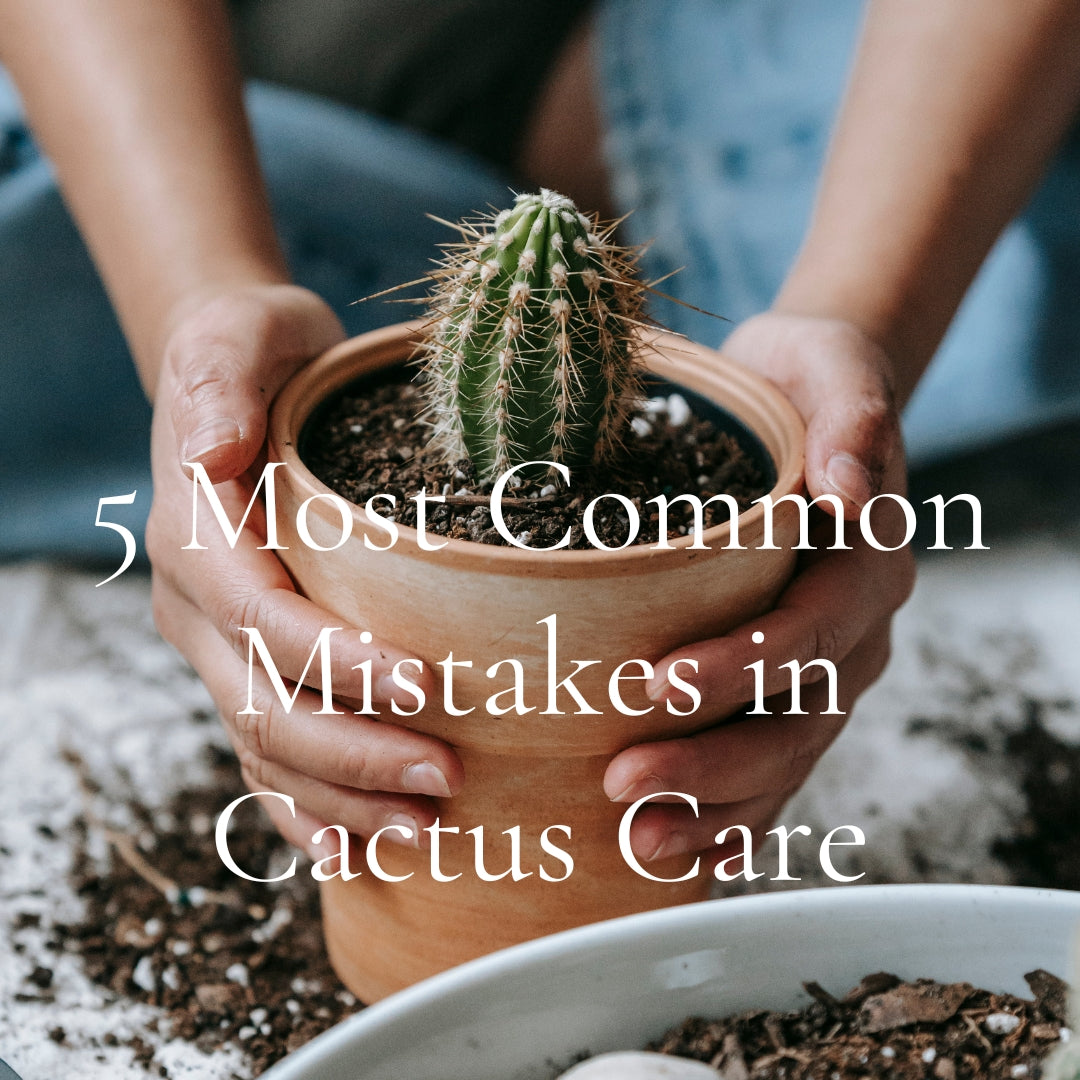Popularity for Cactus is continuously growing because of their hardy nature and need for very less maintenance. But often some minute mistakes are made which can hinder the growth of your Cactus or even decrease their lifespan. Here we have listed 5 important points for maintenance of Cactus. Keep them in mind while taking care of your Cactii and you are good to go!
Check out our short video on the 5 common mistakes & scroll down to read the details too!
1. Use the Right Soil Mix
 Always use Cactus special potting Mix for your Cacti. Regular Mix may cause harm. It forms a better basis for cactus roots than regular soil and keeps roots and stems from sitting in moisture, which can cause root-rot. The right planting mix for cactus plants has superior drainage and will dry out quickly after watering. Cactus love Airy and Well-draining soil.
Always use Cactus special potting Mix for your Cacti. Regular Mix may cause harm. It forms a better basis for cactus roots than regular soil and keeps roots and stems from sitting in moisture, which can cause root-rot. The right planting mix for cactus plants has superior drainage and will dry out quickly after watering. Cactus love Airy and Well-draining soil.One more important thing to remember while planting Cactus is to add a drainage layer at the bottom of the pot. Adding a drainage layer allows excess water to get out of the soil more quickly and away from roots before they can be damaged.
- Use the Right Size Container
 A container that is too large or too small can stifle the cactus's growth and contribute to the plant's demise. Ideally, Cactii should have 1/4th to 1-inch space between the plant body and the pot rim. If the pot is too large, the soil will stay wet longer than desirable for Cactus. Another significant thing is to always choose a pot with a drainage hole. Check the drainage holes for protruding roots, which is a good indicator that repotting is necessary.
A container that is too large or too small can stifle the cactus's growth and contribute to the plant's demise. Ideally, Cactii should have 1/4th to 1-inch space between the plant body and the pot rim. If the pot is too large, the soil will stay wet longer than desirable for Cactus. Another significant thing is to always choose a pot with a drainage hole. Check the drainage holes for protruding roots, which is a good indicator that repotting is necessary.- Consider Season While Repotting
 Cactus can be generally repotted all year long but if repotting is done during the growing season, it will provide the best results. The new soil will provide sufficient nutrients for their growth. Late winter or early spring is considered best season for repotting Cactus. In India, February & March can be the ideal time.
Cactus can be generally repotted all year long but if repotting is done during the growing season, it will provide the best results. The new soil will provide sufficient nutrients for their growth. Late winter or early spring is considered best season for repotting Cactus. In India, February & March can be the ideal time. Repotting during these months will not only promote growth but the chances of drying out of cactus due to repotting remarkably decreases.
- Choose the right time to water
 If you have a Cactus, you should always remember the thumb rule for watering - “Only water when the soil is dry!” Always check the soil before watering. Poke your finger inside the pot close to the roots and if the soil sticks to your finger, wait for couple more days before watering. In case of doubt, always wait for a couple more days before watering. Overwatering kills more cactus than any other reason. While watering, pour the water till it drips out from the drainage hole. Wait till you feel that the maximum amount of water has been drained out to be sure that the roots are properly drenched.
If you have a Cactus, you should always remember the thumb rule for watering - “Only water when the soil is dry!” Always check the soil before watering. Poke your finger inside the pot close to the roots and if the soil sticks to your finger, wait for couple more days before watering. In case of doubt, always wait for a couple more days before watering. Overwatering kills more cactus than any other reason. While watering, pour the water till it drips out from the drainage hole. Wait till you feel that the maximum amount of water has been drained out to be sure that the roots are properly drenched.- Provide Sufficient Sunlight
‘
 The more light & higher temperature – Better it is for the plant’ is a total myth when it comes to Cactus. Bright Afternoon Sun or very high temperature is not good for cactus. Partial Shade or Bright indirect light is ideal for any Cactus. The ideal temperature for sustaining and promoting growth is 15⁰ to 30⁰ Celsius. Temperature beyond this may cause harm.
The more light & higher temperature – Better it is for the plant’ is a total myth when it comes to Cactus. Bright Afternoon Sun or very high temperature is not good for cactus. Partial Shade or Bright indirect light is ideal for any Cactus. The ideal temperature for sustaining and promoting growth is 15⁰ to 30⁰ Celsius. Temperature beyond this may cause harm.Also checkout some of our bestselling cactus on our website and also few given below.







1 comment
DEBASISH DAS
GOOD ARTICLE OF KNOWLEDGE GAINING!